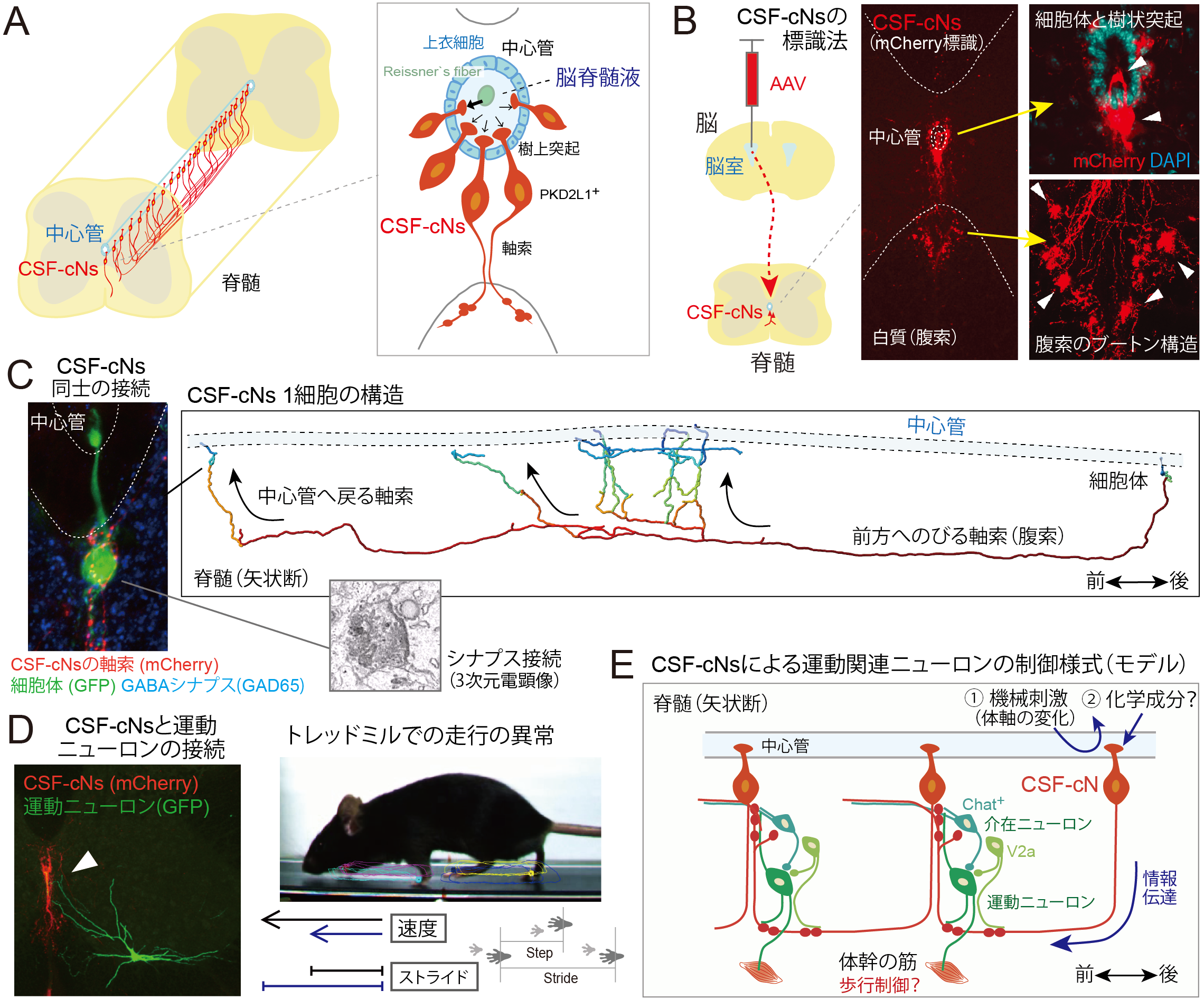2023.02.27
Cerebrospinal fluid-contacting neuron tracing reveals structural and functional connectivity for locomotion in the mouse spinal cord
eLife. 2023;12:e83108. DOI: https://doi.org/10.7554/eLife.83108
Nakamura Y1, Kurabe M2, Matsumoto M3,4, Sato T1, Miyashita S1, Hoshina K1, Kamiya Y2, Tainaka K1, Matsuzawa H5,6, Ohno N7,8, Ueno M1
1Department of System Pathology for Neurological Disorders, Brain Research Institute, Niigata University
2Division of Anesthesiology, Niigata University Graduate School of Medical and Dental Sciences
3Section of Electron Microscopy, Supportive Center for Brain Research, National Institute
for Physiological Sciences
4Department of Developmental and Regenerative Neurobiology, Institute of Brain Science, Nagoya City University Graduate School of Medical Sciences
5Center for Advanced Medicine and Clinical Research, Kashiwaba Neurosurgical Hospital
6Center for Integrated Human Brain Science, Niigata University
7Department of Anatomy, Division of Histology and Cell Biology, Jichi Medical University, School of Medicine
8Division of Ultrastructural Research, National Institute for Physiological Sciences
Abstract
Cerebrospinal fluid-contacting neurons (CSF-cNs) are enigmatic mechano- or chemo-sensory cells lying along the central canal of the spinal cord. Recent studies in zebrafish larvae and lampreys have shown that CSF-cNs control postures and movements via spinal connections. However, the structures, connectivity, and functions in mammals remain largely unknown. Here we developed a method to genetically target mouse CSF-cNs that highlighted structural connections and functions. We first found that intracerebroventricular injection of adeno-associated virus with a neuron-specific promoter and Pkd2l1-Cre mice specifically labeled CSF-cNs. Single-cell labeling of 71 CSF-cNs revealed rostral axon extensions of over 1800 μm in unmyelinated bundles in the ventral funiculus and terminated on CSF-cNs to form a recurrent circuitry, which was further determined by serial electron microscopy and electrophysiology. CSF-cNs were also found to connect with axial motor neurons and premotor interneurons around the central canal and within the axon bundles. Chemogenetic CSF-cNs inactivation reduced speed and step frequency during treadmill locomotion. Our data revealed the basic structures and connections of mouse CSF-cNs to control spinal motor circuits for proper locomotion. The versatile methods developed in this study will contribute to further understanding of CSF-cN functions in mammals.
*Reprinted under the terms of the Creative Commons Attribution License (CC BY).
 Fig1.
Fig1.
Related BRI Department
System Pathology for Neurological Disorders - Ueno Lab
System Pathology for Neurological Disorders - Tainaka Lab





